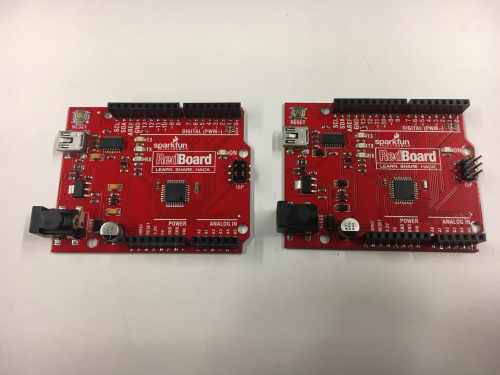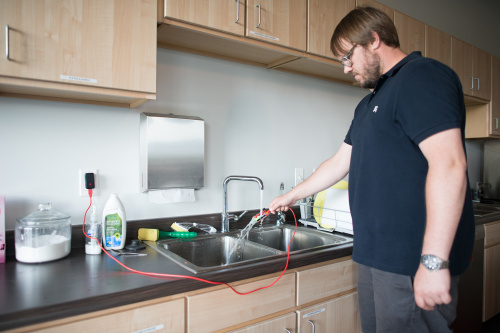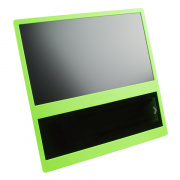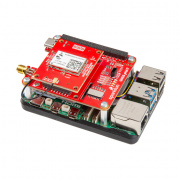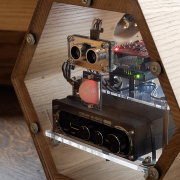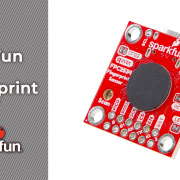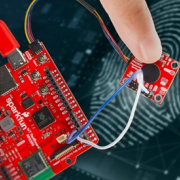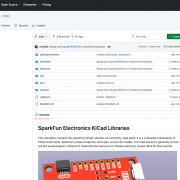Enginursday: Playin' with Parylene
Conformal coatings have always been a big thing in the electronics world, but you rarely see it in the hobbyist/prototyping market. Here's our experience and where it is beneficial to use.
If you're not familiar with the term conformal coating, it's a coating applied to a circuit board to protect the components and circuitry. Think of the YouTube videos where they pour the chocolate sauce on the sneakers and it runs off without sticking to the material. A conformal coating is very similar, and most of them are so thin you can't tell it's on the board.
SparkFun has been looking into the idea of a conformal coating process for a while – something that can protect from things like dust, water and ESD could save a lot of headaches. But it could cause a lot too; it's not the most cost-effective solution, and its insulating properties cause their own issues. Earlier this summer when Nate told me he'd been talking to VSI Parylene about a protective coating for circuit boards, I was initially skeptical. Nate brought them in for a meeting where we brainstormed possible ways we could work together, but before we get into that, let's talk about Parylene and why it caught my interest.
Parylene itself is a trade name, but it accounts for a few different variants of a specific polymer popular in conformal coating. Beyond ESD protection, Parylene offers a number of favorable characteristics for other applications such as medical, military and aerospace. These characteristics include dropping the (kinetic and static) coefficient of friction, as well as being hydrophobic and corrosion resistant, and they accomplish this with a bio-stable composition that has an FDA approval for certain applications.
There are many ways in which various types of conformal coatings can be applied to a surface, such as spray or dip being the most common. Parylene is deposited in a more unique way, via chemical vapor deposition (CVD) which takes place inside a vacuum chamber held at room temperature. The Parylene settles from its gaseous state to form a homogeneous surface, essentially growing the layer molecule by molecule. Having seen it in person, it’s incredibly difficult to tell it’s on the board. The thickness can be changed from run to run, but a normal coating was around 15um (microns).
I'm giving you all this information because it's what got me interested in Parylene. You have a coating that is a strong insulator, yet could coat medical tools. It could change our boards, our tools –- maybe even wires. But every time I went to pitch an idea, I had to stop myself. I'd found the problem.
The first issue I kept running into with my ideas was the biggest: It's a coating. In most situations, it should be the last step in the process. It becomes more difficult to work at its full potential when applied to boards that still might need to be soldered to or modified in other ways. Each additional step of the assembly adds another part that hasn't been coated in this protective layer. The better part of our catalog is designed to be soldered to – definitely not the most optimal situation. We considered whether you could solder through the coating, but this brought up its own issues. First, the solder joint would be exposed and outside the protective coating, but more importantly was the issue of heating up the Parylene. If you refer back to the molecular compound of Parylene. The variant of Parylene we were looking into utilized chlorine in its composition. While perfectly harmless in the solid state of Parylene, they might not be the most healthy to be near when in a gaseous state. We didn't go down the road of exactly how harmful it could be, and decided it wasn't worthwhile.
Another issue with the coating was its success around connectors. Even though the vacuum chamber method does a great job of coating the board, there are lots of tiny cavities in connectors that the coating has a tough time getting into. In addition, connectors have parts that you don't want insulated. VSI has a great way of dealing with this: Simply tape over the openings you don't want coated, which protects the conductive parts quite well. It was also a possible solution to the solder pad issue.
We went about compiling a list of possible boards that this would make sense for. Some got taped in spots we didn't want coated, and others were completely coated. VSI sent us back the boards labeled, coated and ready for testing. We tested the boards at various conditions involving water, from putting a few drops on pins to fully submerging them. Obviously, we needed a comparative group for this, so uncoated boards were given the same treatment. Sadly, most of the uncoated boards didn't survive the test, but the coated boards did amazingly well. At one point, I decided to use some less conventional testing methods.
We did see some evidence that the connectors weren't getting fully coated as expected, but for the most part we were impressed. A decision had to be made: Was it worthwhile for us to sell some of our boards coated in Parylene? We knew any boards that usually end up being soldered to were not good candidates, but what about the ones that wouldn't normally require soldering, like the Redboard? The Parylene could provide a solid defense against some of the most common causes of board wear or destruction. Parylene protects against environmental destruction, but there's still the chance of hooking up a project incorrectly, or bricking the microcontroller through a software error. Would the partial protection be worth the extra step? If so, what about the rest of the customer's project (which would unlikely be coated in Parylene)?
In the end we decided conformal coatings weren't right for our boards. It's an amazing product, but it's best suited for complete projects. If you have a project that might benefit from a protective coating, I urge you to get in contact with VSI Parylene. They're incredibly helpful, and while it's not the cheapest solution, I think you'll find it more inexpensive than you would estimate.

